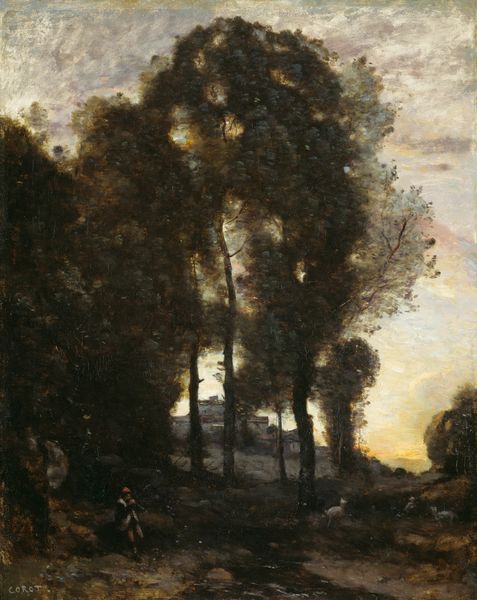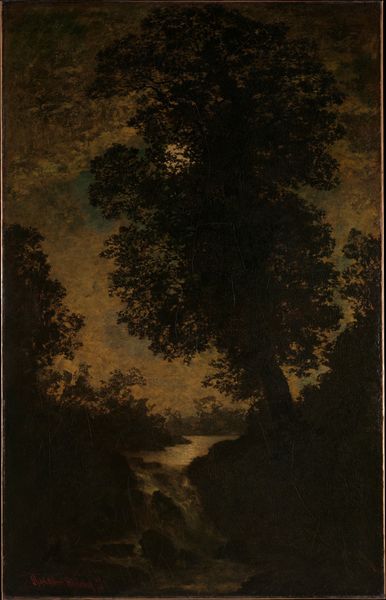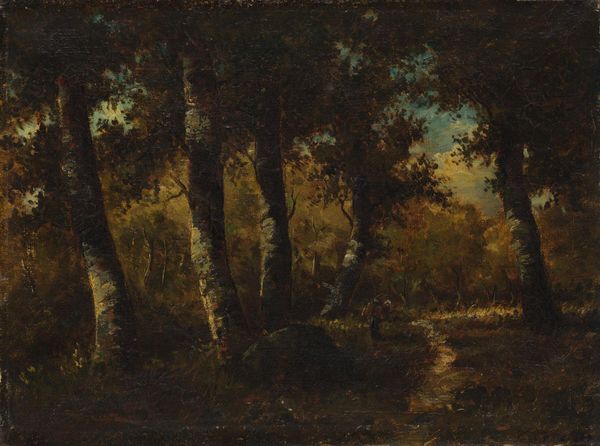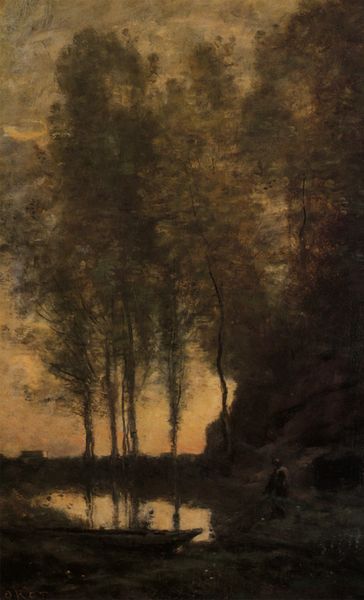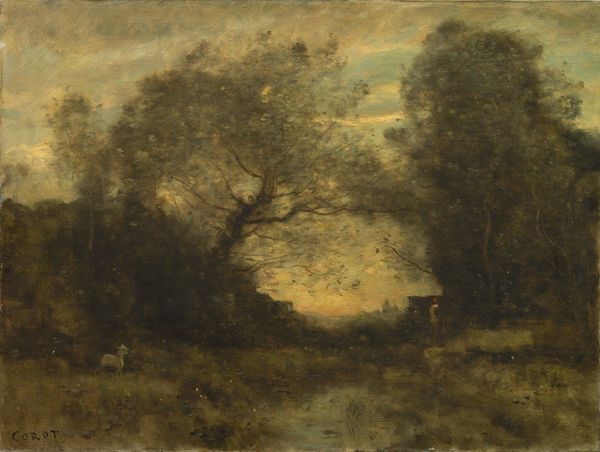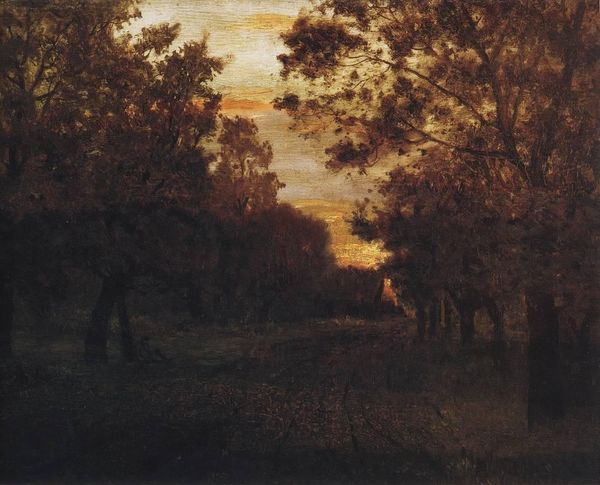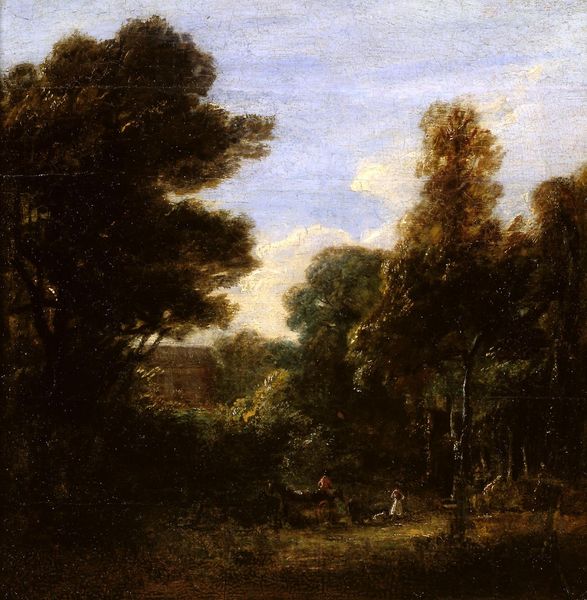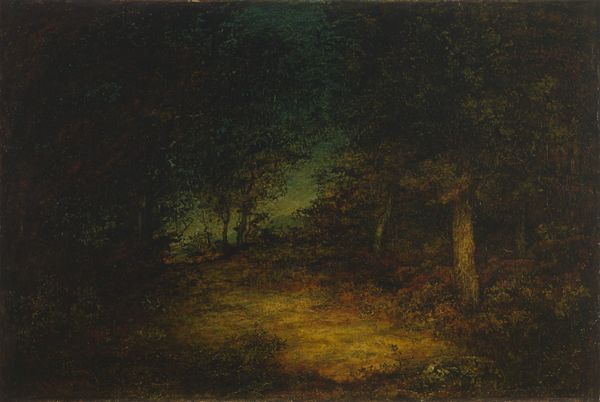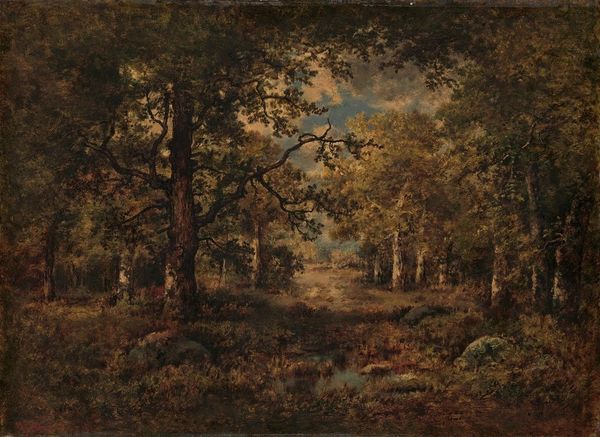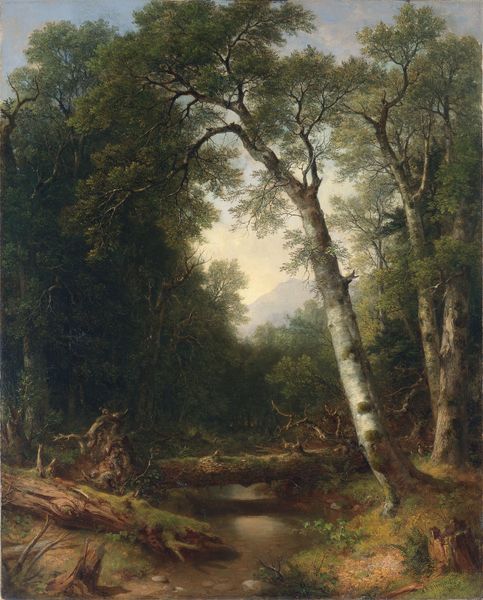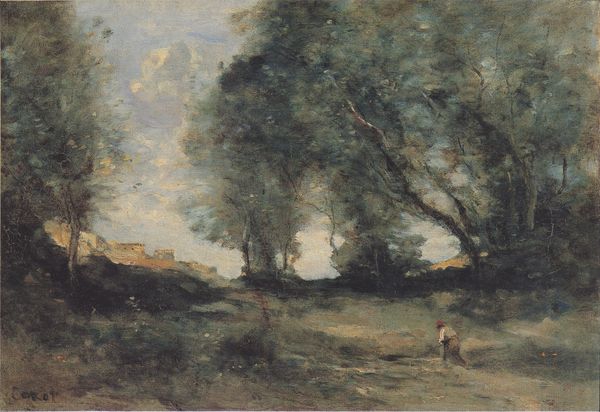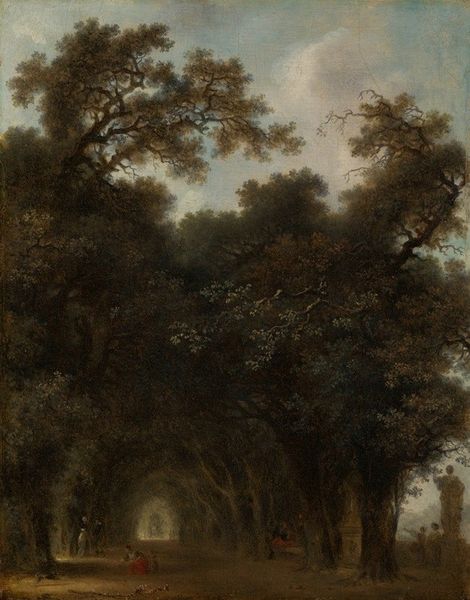
painting, oil-paint, wood
#
baroque
#
dutch-golden-age
#
painting
#
oil-paint
#
landscape
#
wood
#
realism
Dimensions: 23.5 cm (height) x 18 cm (width) (Netto), 51.1 cm (height) x 46.7 cm (width) x 7 cm (depth) (Brutto)
Curator: This is "Road in an Oak Forest," an oil on wood painting by Jacob Isaacksz. van Ruisdael, created in 1646. Editor: It's immediately striking—a heavy, almost oppressive darkness. The dense thicket feels like it’s closing in. Curator: Yes, Ruisdael masterfully uses light and shadow. The oak trees dominate, symbols of strength and longevity, but here, the path ahead appears obscured, almost melancholic. In Dutch Golden Age painting, landscapes often represented more than just scenic views. They reflected the Dutch people's relationship with their land, particularly their constant battle against the sea. Do you think that informs the perspective? Editor: Absolutely, but it speaks also to themes of control, dominance even. Consider the economic context. Forests, in the 17th century, were vital for shipbuilding and trade. Who controlled these resources controlled power. The darkness might represent not only the wildness of nature, but perhaps the unregulated, even exploitative forces at play in shaping the Dutch Republic. I'm struck by the small patch of open sky peeking through the leaves—it seems almost like a beacon. Curator: It does provide a small glimpse of hope, doesn’t it? Light breaking through signifies divine presence, revealing glimpses of the sublime within earthly chaos. Remember also that this period saw the rise of Protestantism in the Netherlands. There's a spiritual element here. This work might imply that true spiritual enlightenment demands passing through dark and difficult situations. Editor: It is compelling when read through that lens. I wonder about the small human figure; nearly swallowed by the grandioseness of nature. Could they represent ordinary people confronting immense powers, facing uncertainty during the burgeoning colonial era? Their fragility, set against nature's brute power...it’s a statement, wouldn’t you agree? Curator: I'd not thought of it quite like that, but I can see what you're saying. It definitely lends the work another layer of interpretation and relevance for contemporary audiences. Editor: Well, Ruisdael offers so much richness here. We see nature, yes, but also echoes of societal shifts and spiritual undercurrents. Curator: Indeed. The symbolism offers diverse reflections. The density speaks to perseverance and the figure inspires questions. It provides continued discourse on that important intersection between humanity and nature.
Comments
No comments
Be the first to comment and join the conversation on the ultimate creative platform.
